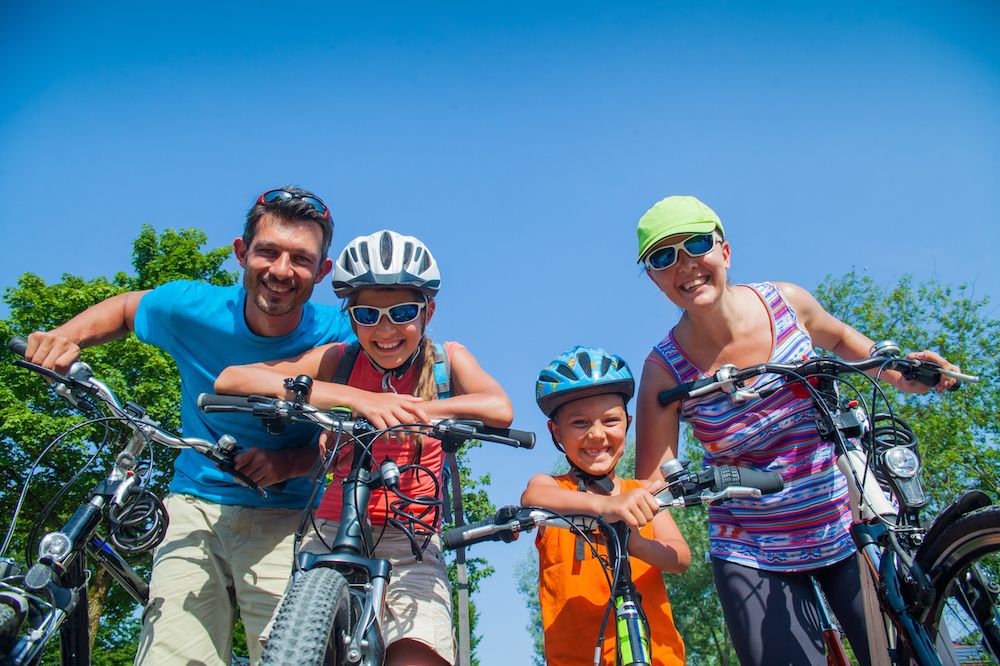Proper nutrition and hydration make a big difference on long bike rides, and it’s particularly important at three vital times — before, during and after a ride. Try these tips to help you make the most out of any cycling endeavor.
Pre-ride Prep
The frequency and intensity of your riding is a major factor in determining what and how much to eat in order to be well-prepared. Your pre-ride meal should consist of easy-to-digest foods that come primarily from carbohydrates. Examples include bananas, dried fruits, Fig Newton® cookies and bagels. Avoid whole grains and high-fiber foods as these carbs typically take longer to digest. Why carbohydrates? Carbohydrates are broken down quickly and efficiently into glucose your muscles can use for energy. Unused carbohydrates are stored in the muscles and liver as glycogen.
Re-fueling During Your Ride
A common cycling mantra reminds riders to “eat before you’re hungry and drink before you’re thirsty.” That’s sage advice and you should consume high-carbohydrate foods frequently throughout a ride. Aim for a carbohydrate snack about every 30 minutes. Good on-the-bike foods include dried fruit, bananas, energy bars, energy gels or pretzels.
How much to eat? Cycling is a great calorie-burner, and you’ll want to make sure you take in enough calories to avoid running empty. A good way to estimate the number of calories you’ll need is to multiply the distance in miles traveled by 40-50 calories. For example, A 30-mile ride would require an additional estimated 1,200-1,500 calories. The lower end of that range is best for slower or lighter riders, and the high end is best if you’re faster or heavier. You can estimate your carbohydrate needs for a long ride by figuring that you’ll need about 30 to 60 grams (g) of carbohydrates per hour of riding. If you’re eating adequately across the day, you may not need additional fuel support for rides less than 90 minutes.
Hydration is crucial for cyclists, especially in warmer weather. Water regulates your body temperature, and you lose water quickly through sweat and urine. Take a swig from your water bottle every 10 minutes during your ride to ensure consistent hydration. A good general guideline is to go through one 16-ounce bottle of water or energy drink per hour.
Never miss another Cancer Talk blog!
Sign up to receive our monthly Cancer Talk e-newsletter.
Sign up!Post-ride Recovery
The first 20 minutes after a ride is the optimal refueling period when nutrients are taken up more efficiently and transported to your muscle stores. Aim for both carbohydrates and protein, with a 3:1 carbohydrate to protein ratio. A delicious example? Chocolate milk. Eight ounces of low-fat chocolate milk has the perfect 3:1 ratio, plus it’s inexpensive and satisfying. Experiment with different foods and drinks. What works for you may not work for someone else. Consult a Registered Dietitian for further recommendations.
After a rigorous bike ride, follow these steps to help avoid tight and sore muscles.
- Avoid hopping off your bike right away. Continue with some easy riding for a few minutes to keep fresh blood flowing to your muscles and pumping out metabolic waste that accumulated during your ride.
- After you dismount, keep walking around for 10-15 minutes.
- Massage your muscles. Massage, whether you see a professional or simply use a foam roller, helps improve circulation, facilitating a faster recovery.
- Stretch those muscles, especially the ones that did the lion’s share of work during your ride. Check out this great stretching and foam rolling guide!
- Enjoy an easy ride, or just a light walk the next day. Tell yourself that any soreness you may feel is a pleasant reminder of yesterday’s big accomplishment.


